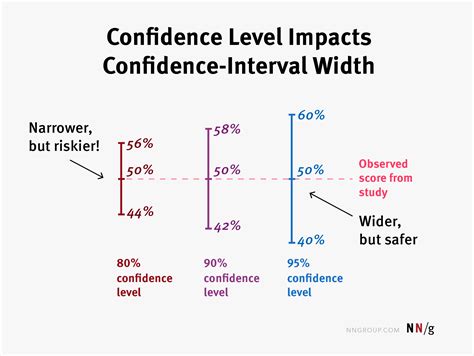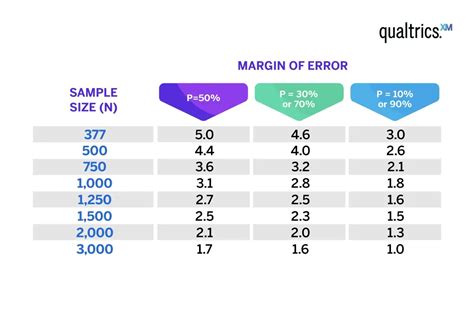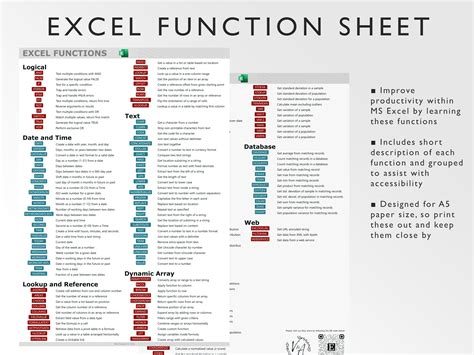Intro
Learn how to calculate margin of error in Excel with ease. Discover three simple methods to determine the margin of error for surveys, polls, and research studies. Master the formulas and techniques to calculate confidence intervals, standard errors, and sample sizes, ensuring accurate results and reliable data analysis.
Calculating the margin of error in Excel is a crucial step in statistical analysis, particularly when working with survey data or samples. The margin of error is a measure of the maximum amount by which the sample results may differ from the true population value. In this article, we will explore three easy ways to calculate the margin of error in Excel.
Understanding Margin of Error

Before diving into the calculation methods, it's essential to understand the concept of margin of error. The margin of error is a statistical measure that takes into account the sample size, confidence level, and standard deviation of the population. It provides a range within which the true population parameter is likely to lie.
Factors Affecting Margin of Error
Several factors can affect the margin of error, including:
- Sample size: A larger sample size generally results in a smaller margin of error.
- Confidence level: A higher confidence level, such as 95% or 99%, will result in a larger margin of error.
- Standard deviation: A larger standard deviation will result in a larger margin of error.
Method 1: Using the Margin of Error Formula

The margin of error formula is:
Margin of Error (ME) = (Z x σ) / √n
Where:
- Z is the Z-score corresponding to the desired confidence level
- σ is the standard deviation of the population
- n is the sample size
To calculate the margin of error using this formula in Excel, follow these steps:
- Enter the sample size (n) in a cell, e.g., A1.
- Enter the standard deviation (σ) in a cell, e.g., B1.
- Look up the Z-score corresponding to the desired confidence level in a Z-table or use the NORMSINV function in Excel. For example, for a 95% confidence level, the Z-score is approximately 1.96.
- Enter the Z-score in a cell, e.g., C1.
- Use the formula: = (C1 x B1) / SQRT(A1)
Example Calculation
Suppose we have a sample size of 100, a standard deviation of 10, and a desired confidence level of 95%. Using the formula above, we get:
ME = (1.96 x 10) / √100 ≈ 1.96
So, the margin of error is approximately 1.96.
Method 2: Using the CONFIDENCE Function in Excel

Excel provides a built-in function called CONFIDENCE that can be used to calculate the margin of error. The syntax for this function is:
CONFIDENCE(alpha, standard_dev, size)
Where:
- alpha is the significance level (1 - confidence level)
- standard_dev is the standard deviation of the population
- size is the sample size
To use this function in Excel, follow these steps:
- Enter the sample size (size) in a cell, e.g., A1.
- Enter the standard deviation (standard_dev) in a cell, e.g., B1.
- Enter the desired confidence level in a cell, e.g., C1. For example, for a 95% confidence level, enter 0.05 (1 - 0.95).
- Use the formula: =CONFIDENCE(C1, B1, A1)
Example Calculation
Using the same example as above, we get:
=CONFIDENCE(0.05, 10, 100) ≈ 1.96
So, the margin of error is approximately 1.96.
Method 3: Using Online Margin of Error Calculators

If you don't have access to Excel or prefer a simpler method, you can use online margin of error calculators. These calculators are available on various websites and can be used to calculate the margin of error with minimal effort.
To use an online margin of error calculator, follow these steps:
- Search for "margin of error calculator" in your favorite search engine.
- Select a calculator that suits your needs.
- Enter the required information, such as sample size, standard deviation, and confidence level.
- Click the "Calculate" button to get the margin of error.
Example Calculation
Using an online margin of error calculator, we can enter the same values as above and get:
Margin of Error ≈ 1.96
So, the margin of error is approximately 1.96.
Margin of Error Image Gallery










In conclusion, calculating the margin of error in Excel is a straightforward process that can be achieved using various methods. Whether you prefer using formulas, Excel functions, or online calculators, you can easily determine the margin of error and make informed decisions based on your data. Remember to always consider the factors that affect the margin of error and choose the method that best suits your needs.
